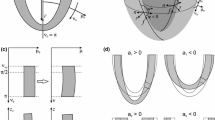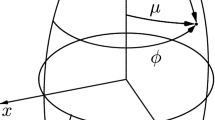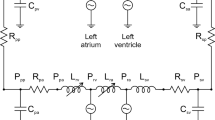Abstract
A regulated left ventricular dynamics model is presented which involves interaction of the dynamics of the left ventricular and circulatory systems and their regulation by the central nervous system. On-line human parametric simulation (parameter estimation) and consequential prognostic implications (based on parametric values) are demonstrated. Model responses to simulated physiologic stresses help delineate tolerances of subjects. In order to have an estimate of the reliability of the model, the sensitivity of the model's responses to changes in the values of its intrinsic parameters is assessed. Also determined is the extent to which errors in measuring the pressure affect the calculated values of the model's simulation parameters and subsequently influence the values of other diagnostically useful variables (such as contractility, oxygen consumption rate, heart rate), when the model is used to determine the limiting physiological stress sustainable by the subject. A comparison of the model's composition with those of other similar cardio-circulatory models is included.
Similar content being viewed by others
Literature
Amosov, N. M., V. A. Lischuk and B. L. Palets. 1969. “Self-Regulation of the Heart.”Math. Biosci.,5, 205–226.
—, B. A. Beregovsky, O. I. Lissova and B. L. Palets. 1973. “Steady-state Characteristics of Circulatory System.” InRegulation and Control in Physiological Systems Iberall, A. S. and Guyton, A. C., eds., pp. 369–371. Pittsburgh: International Fed. Auto. Control, Distributed by Instrument Society of America.
Beneken, J. E. W. 1965. “A Mathematical Approach to Cardiovascular Function. The Controlled Human System.” Utrecht: Inst. of Medical Physics TNO, Report 2.4.5-6.
— and B. Dewitt. 1967. “A Physical Approach to Hemodynamic Aspects of the Human Cardiovascular System.” InPhysical Bases of Circulatory Transport, Reeve, E. B. and Guyton, A. C., eds., pp. 1–45. W. B. Saunders, Philadelphia.
Defares, J. G., J. J. Osborn and H. H. Hara. 1963. “Theoretical Synthesis of the Cardiovascular System: Study 1, The Controlled System.”Acta Physiol. Pharmac. Neer,21, 189–265.
Dodge, H. T., H. Sandler, A. W. Baxley and R. R. Hawley. 1966. “Usefulness and Limitation of Radiographic Methods for Determination of Left Ventricular Volume.”Am. J. Cardiol.,18, 10–24.
Donders, J. J. H. and J. E. W. Beneken. 1970. “Myocardial Force-Velocity Parameters as a Function of the Active State.” Utrecht: Institute of Medical Physics, TNO, Report 2. 4.93-1.
— and J. E. W. Beneken. 1971. “Computer Model of Cardiac Muscle Mechanics.”Cardiov. Res. Suppl.,1, 34–50.
Donders, J. J. H., J. C. Zuidervaart, J. P. Rebijn, and J. E. W. Beneken. 1973.Proc. 3rd IFAC Symp., the Hague/Delft, the Netherlands, pp. 221–230.
Downing, S. E. and E. H. Sonnenblick. 1964. “Cardiac Muscle Mechanics and Ventricular Performance: Force and Time Parameters.”Am. J. Physiol.,207, 705–715.
Gault, J. H., R. Kahan, Richard Bouchard, J. S. Karliner and J. Ross. 1970. “Comparison of Maximal Contractile Element Velocity (V max) and Tension-Velocity Measurements During Ejection as Estimates of Left Ventricular Contractility.”Am. J. Cardiol.,25, 97.
Ghista, D. N. and H. Sandler. 1969. “An Analytic Elastic-Viscoeleastic Model for the Shape and the Forces of the Left Ventricle.”J. Biomechanics,2, 35–47.
— and W. Vayo. 1969. “The Time Varying Elastic Properties of the Left Ventricle.”Bull. Math. Biophys.,31, 75–92.
— and H. Sandler. 1970. “An Indirect Determination of the Oxygen Utilization of the Human Left Ventricle.”J. Biomechanics,3, 161–174.
—, S. H. Advani, G. H. Gaonkar, K. Balachandran and A. J. Brady. 1971. “Analysis and Physiological Monitoring of the Human Left Ventricle.”J. bas. Engng. 93, 147–161.
—, K. M. Patil, K. B. Woo and C. Oliver. 1972. “A Human Left Ventricular Control System Model for Cardiac Diagnosis.”J. Biomechanics,5, 365–390.
—, A. J. Brady and S. Radhakrishnan. 1973. “A Three-dimensional Analytical (Rheological) Model of the Human Left Ventricle in Passive-Active States.”Biophys. J.,13, 832–854.
Ghista, D. N., N. Bh. Rao and S. H. Advani. 1975. “In vivo Elastic Modulus of the Left Ventricle: its Determination by Means of Left Ventricular Vibrational Model and its Physiological Significance and Clinical Utility.”Med. Biol. Engng (in press).
Glick, Gerald and Eugene Braunwald. 1965. “Relative Roles of the Sympathetic and Parasympathetic Nervous Systems in the Reflex Control of Heart Rate.”Circulat. Res.,16, 363–375.
Gould, P., L. Brombolich, D. N. Ghista and I. Mirsky. 1972. “In vivo Stresses in the Human Left Ventricular Wall: Analysis Accounting for the Irregular 3-dimensional Geometry and Comparison with Idealized Geometry Analyses.”J. Biomechanics,5, 521–539.
Grodins, F. S. 1959. “Integrative Cardiovascular Physiology: A Mathematical Synthesis of Cardiac and Blood Vessel Hemodynamics.”Quart. Rev. Physiol.,34, 93–116.
Grood, E. S., E. S. Mates and H. L. Falsetti. 1973. “A Model of Cardiac Muscle Dynamics.”Am. Soc. Mech. Engrs, Winter Meeting, Detroit, Michigan.
Hamid, M. S. and D. N. Ghista. 1974. “Finite Element Analysis of Human Cardiac Structures.” InFinite Element Methods in Engineering, Pulmane, V. A. and Kabaila A. P., eds., pp. 337–348. Australia: Clarendon Press.
Katona, P. G. 1965. “Computer Simulation of the Blood Pressure Control of Heart Period.” Sc.D. Thesis, M.I.T., Cambridge, Mass.
Levine, J. H. 1967. “Muscle Mechanics in thein situ Heart.” InFactors Influencing Myocardial Contractility”, Tanz, R. D., ed., pp. 93–111. New York: Academic Press.
Martin, P. J. 1970. “Analysis of Myocardial Performance in the Blood Pressure Control System.”Automedica,6, 175–191.
Mirsky, I. 1969. “Left Ventricular Stresses in the Intact Heart.”Biophys. J.,9, 189–208.
—. 1970. “Effects of Anisotropy and Nonhomogeneity on Left Ventricular Stresses in the Intact Heart.”Bull. Math. Biophys.,32, 197–213.
Monroe, R. G. and G. N. French. 1961. “Left Ventricular Pressure-Volume Relationships and Myocardial Oxygen.”Circular. Res.,9, 362–374.
Noordergraaf, A., P. D. Verdouw, A. W. G. Van Brummelen and F. W. Wiegel. 1964. InPulsatile Blood Flow, Attinger, E. O., ed., p. 373. New York: McGraw-Hill.
Patil, K. M. 1971. “A Control System Model for the Mechanics of the Human Left Ventricle.” D.Sc. dissertation, Washington University, St. Louis.
Pickering, W. D., P. N. Nikiforuk and J. E. Merriman. 1969. “Analogue Computer Model of the Human Cardiovascular Control System.”Med. Biol. Engng.,7, 401–409.
Robinson, D. A. 1965. “Quantitative Analysis of the Control of Cardiac Output in the Isolated Left Ventricle.”Circulat. Res.,27, 207–221.
Sagawa, K., M. Kumada, L. P. Schramm and A. A. Shoukas. 1973. “Studies on the Arterial Baroreceptor Reflex System.” InRegulation and Control in Physiological Systems, Iberall, A. S. and Guyton, A. C., eds., pp. 355–358. Publ. International Fed. Auto. Control; distr. Instru. Soc. America, Pittsburgh.
Snyder, M. F. and V. C. Rideout. 1969. “Computer Simulation Studies of the Venous Circulation”.IEEE Trans. Bio. Med. Engng,16, 325–334.
Suga, H. and K. Sagawa. 1972. “Mathematical Interrelationship Between Instantaneous Ventricular Pressure-Volume Ratio and Myocardial Force-Velocity Relation.”Ann. Biomed. Engng.,1, 160–181.
Vander, A. J., J. H. Sherman and D. S. Luciano. 1970. InHuman Physiology, pp. 242–300. New York: McGraw-Hill.
Warner, H. R., H. J. C. Swan, D. C. Connolly, R. G. Tompkins and E. H. Wood. 1953. “Quantitation of Beat-to-Beat Changes in Stroke Volume from the Aortic Pulse Contour in Man.”J. appl. Physiol.,5, 495–507.
— and A. Cox. 1962. “A Mathematical Model of the Heart Rate Control by Sympathetic and Vagus Efferent Information.”J. appl. Physiol.,17, 349–355.
—. 1966. “The Role of Computers in Medical Research.”J. Am. Med. Ass.,196, 944–949.
Author information
Authors and Affiliations
Rights and permissions
About this article
Cite this article
Patil, M.K., Ghista, D.N. Construction, simulation, clinical application and sensitivity analyses of a human left ventricular control system model. Bltn Mathcal Biology 37, 521–553 (1975). https://doi.org/10.1007/BF02459518
Received:
Revised:
Issue Date:
DOI: https://doi.org/10.1007/BF02459518




